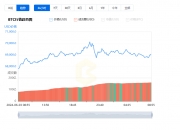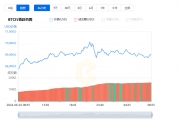Web3.0有以下优点:1.去中心化;2.开放性强;3.互联网商业环境公平化;4.用户数据安全性强;5.不中断服务。去中心化是Web3.0最大的优点,也是其核心特点,它将将数据归还于用户,终端用户将会再次完全控制数据,拥有加密安全性。
Web3.0 has the following advantages: 1. Decentralization; 2. Openness; 3. Equitable Internet business environment; 4. User data security; 5. Non-interruptible services. Decentralization is the greatest advantage of Web3.0 and its core feature, which will return the data to the user, and the end user will once again have complete control over the data and secure encryption.
Web3.0主打去中心化,将数据归还于用户,目前行之有效的底层存储为分布式存储ipfs。这个协议通过将数据分成多段,进行多节点备份,然后通过hash聚合获取原始文件。有几个特点是:全世界分布式网络,分段存储、merkle-tree聚合,多备份,永久,难以攻击等。在Web3.0中有望替代http协议,与区块链(不足以承载大数据量)结合构成Web3.0的底层。同时,Web3.0未来的畅销将可以无缝地在任何设备上使用,真正建立一个“无处不在的网络”。
Web3.0 is decentralised and returns data to users, and the currently well-functioning bottom is distributed storage of ipfs. The protocol is backed up by multiple segments of data, multiple nodes, and then the original files are obtained by hash aggregates. There are several features: worldwide distribution networks, partial storage, Merkle-tree aggregation, multiple backups, permanent and difficult to attack, etc. In Web3.0, it is expected to replace the http protocol with a block chain (which is not sufficient to carry large amounts of data) to form the bottom of Web3.0. At the same time, Web3.0's future best sales will be seamlessly used on any device and truly create an `omnipresent network'.
用户在某个互联网应用“领域”中的准入充分自由、门槛低;用户行为不受第三方限制、互联网应用打破原有的所谓生态内、生态间的界限,应用之间具有高度的组合性和复合性;合成资产、NFT等组合下,甚至可以在非许可、无交割的前提下将传统世界财富融合进入Web3.0。Web3.0内部基于不同基础设施的应用之间可以被“跨链”协议解决互联互通。
Users have full freedom of access and low thresholds in the “area” of an Internet application; user behaviour is not restricted by third parties; Internet applications break the original so-called ecological and inter-ecological boundaries and there is a high degree of combination and complexity between applications; a combination of synthetic assets, NFTs, etc., can even integrate traditional world wealth into Web3.0 without permission or handover. Web3.0 internal applications based on different infrastructure can be addressed by a “cross-link” agreement.
跟Web2.0时代商业价值完全掌握在大平台不同,Web3.0建立在去中心化的网络,平台商不能独占和使用用户数据,这将彻底改变商业逻辑和商业价值归属,打造一个更加公平的互联网商业环境,打破行业巨头的垄断。
Unlike the WEB 2.0 era, where business values are well held in large platforms, Web3.0 is built into decentralized networks that do not have exclusive access to and use of user data, which will radically change the attribution of business logic and value, create a more equitable Internet business environment and break the monopoly of industry giants.
在Web2.0,用户的数据汇聚在各大平台网络,并存储在中心化的服务器,安全性极低,随时存在篡改的风险。但在Web3.0,分布式账本技术可提供一种全新的保护方案,用户数据经密码算法保护后在分布式账本上存储。区块链不可篡改,保证用户的数据确权和价值归属。
In Web 2.0, user data are collected in a network of major platforms and stored on a centralized server with minimal security and a risk of manipulation at any time. However, Web3.0, distributed book technology provides a completely new protection scheme, and user data is stored on distributed accounts when protected by password algorithms. The block chain is not tampered with to ensure that users have the right and value of data.
分布式系统不太容易中断服务。由于没有可运行的中央实体,因此难以对分布式拒绝服务(DDoS)或其他形式的服务故障尝试产生影响。这使Web3.0成为共享数据和关键服务的好地方,而不必担心服务中断。
Distributed systems are not easy to interrupt services. The absence of a functioning central entity makes it difficult to influence distributed denials of services (DDoS) or other service failure attempts. This makes Web3.0 a good place to share data and key services without fear of interruption.
延伸阅读
Extended Reading
1.Web1.0:PC互联网时代
Web 1.0,也就是名列前茅代互联网,是静态互联网,主要的应用是网络媒体。在这个时代,用户主要依靠搜索网站及门户网站,来找到我们想要的信息并接收,这个阶段我们主要是单向地接收信息,无法主动与网络交互,内容以PGC(专业机构生产内容)为主。因此,整个Web 1.0媒体相当于传统报刊杂志的电子化。
Web 1.0, or the top-generation Internet, is static, and the main application is web-based media. In this era, users rely mainly on searching websites and portals to find and receive what we want, a phase in which we receive information in a one-way direction and cannot interact with the network on our own initiative. The content is dominated by the PGC. So, the entire Web 1.0 media is equivalent to the electronicization of traditional journals.
2.Web2.0:移动互联网时代
Web 2.0,也就是第二代互联网,是交互式互联网,主要的应用是社交网络和电商。在这个阶段,平台只是提供一个基础设施,自己创造的内容很少,绝大多数内容是用户创造的。但是平台却静悄悄的扩张了自己的权利,凭借着自己对技术基础设施的控制权,兵不血刃地把用户数据的所有权也拿到了手上。在 Web 2.0 平台上,用户创造的数字内容,所有权属于平台,控制权也属于平台,平台可以决定编辑、修改、删除和屏蔽用户的内容,甚至可以删掉用户的账号,将用户驱逐出其社交网络。此外,这些数字内容所创造的价值如何分配,由平台说了算。用户在使用互联网过程中产生的大量数据足迹,其价值也由平台无偿占有。
Web 2.0, or the second generation of the Internet, is an interactive Internet. The main applications are social networks and electric power providers. At this stage, the platform provides only an infrastructure in which little content is created and most content is created by users. But the platform quietly expands its rights and, with its own control over the technological infrastructure, secures ownership of user data. On the Web 2.0 platform, users create digital content that is owned and controlled by the platform, and that allows the platform to decide to edit, modify, remove and shield user content, even by removing user accounts, and to expel users from its social network.
3.Web3.0:去中心化时代
Web3.0概念旨在创建一个去中心化但安全的互联网,人们可以在其中安全地交换金钱和信息,而无需中间商或大型科技公司。
The Web3.0 concept aims to create a decentralised but secure Internet in which people can safely exchange money and information without the need for intermediaries or large technology companies.
在Web3.0中,用户所创造的数字内容,所有权明确为用户所有,由用户控制,其所创造的价值,根据用户与他人签订的协议进行分配。在这种体系之下,这些数字内容就不再是简单的数据了,而是数字资产,因为它的权利得到了资产级别的保障。这类似数字经济当中的市场经济,确认、尊重和保护个人的数字产权,基于契约进行价值交换。
In Web3.0, the digital content created by the user is clearly owned by the user, controlled by the user, and the value it creates is distributed according to the agreement between the user and another person. Under this system, these numbers are no longer simple data, but digital assets, because their rights are safeguarded by asset levels. This is similar to the market economy in the digital economy, where digital property rights of individuals are recognized, respected and protected, and values are exchanged on a contractual basis.
如果市场经济相对于奴隶制度和封建制度极大的释放了生产力,提升了经济水平,那么Web3.0相对于Web2.0,对于数字经济的发展,应该具有类似的效应。
If the market economy has greatly released productivity and increased economic performance relative to slavery and feudal systems, then Web3.0 relative to Web 2.0 should have a similar effect on the development of the digital economy.
注册有任何问题请添加 微信:MVIP619 拉你进入群

打开微信扫一扫
添加客服
进入交流群





















发表评论